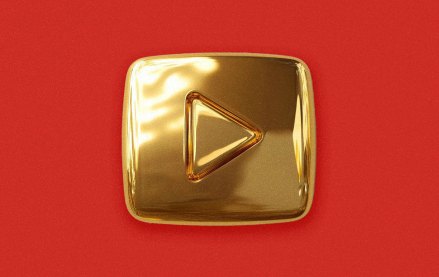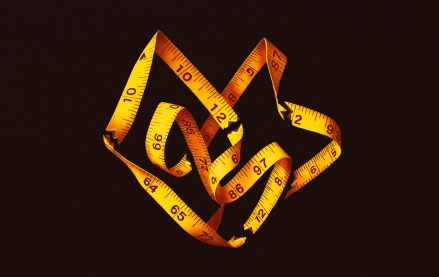Connect with execs from The New York Times, TIME, Dotdash Meredith and many more
No brand favorites: 360-degree videos are popular on both YouTube and Facebook

With both Facebook and YouTube aggressively dialing up their 360-degree video efforts in recent months, the immersive video format has emerged as the latest frontier for the two online video giants to battle it out. It turns out that, so far, both are equally effective at tapping the tech’s potential.
“It’s not about choosing one or the other; they both are effective distribution platforms depending on your audience,” said Matt Powell, global chief technology officer at KBS. “If brands and agencies are trying to decide which one they want to be on, they’re already having the wrong conversation, and someone should get punched.”
Both platforms are already video behemoths, with users watching hundreds of millions of hours of video daily on each. A new format, 360-videos are interactive and immersive videos that offer a 360-degree viewing experience with the click or swipe of a finger. They have quickly gained momentum on them since launching last year: Users uploaded more than 20,000 360-degree videos on Facebook up until February; the number of 360-degree videos on YouTube has doubled over the past three months alone. So as far as the video format is concerned, brands aren’t playing favorites, at least not yet.
“Since 360-video is a new medium, the safe bet was to distribute on both YouTube and Facebook — something we don’t normally do with traditional video,” said Layne Harris, vp of innovation technology at 360i, which produced a 360 video for Oreo’s “Wonder Vault” campaign. Honda, GoPro, Dunkin’ Donuts and McDonald’s and their agencies have also all dabbled in 360 videos on both Facebook and YouTube.
Honda, which ran 360-degree videos for the launch of the 2016 Honda Civic as well as for a Grand prix IndyCar, sees tremendous value in both platforms. Given the investments both and Facebook and YouTube have made in optimizing mobile viewing experiences, both ensure unique and quality experiences. “The accelerometers allow audiences to explore the 360-degree world on their own individual path,” said Ernie Kelsey, Honda’s senior manager of regional, social and experiential marketing.
Several updates in recent weeks and months have opened up 360 videos further, allowing for far greater access to the format. In the initial stages, Facebook was limited to iOS whereas YouTube — and the Google cardboard viewer format specifically — was limited to Android. However, both platforms have expanded to cover most Android and iOS device support now, so marketers no longer need to use device support as a reason to choose a platform, said Shelby Georgis, creative director at DDB Chicago.
“The expansion of supported devices across both platforms means we can reach a broader base of mobile consumers,” she said, explaining why McDonald’s chose both the platforms for its Angry Birds 360 video last month. “Brands can now approach it more strategically from a media and target perspective.”
That’s not to say the platforms don’t each have their own advantages. While people may be used to endlessly scrolling through their Facebook feeds, the thumb-stopping power of compelling content like 360 videos has its appeal, said Honda’s Kelsey. Its targeting capabilities are also a draw for brands and advertisers, allowing them to put significant paid support behind their 360 videos and achieve creative breakthrough at real scale. It also has the advantage of autoplay, which can prove to result in more views and more engagement.
“Facebook has an inherent lower funnel advantage and a built-in audience,” said Michael Jobst, national marketing director at BMW North America, whose 360 video featuring model Gigi Hadid leads Google’s 360 Ads Leaderboard with over 5.4 million views. “The in-feed user experience is an efficient way to actually drive momentum for sales.”
But execs agreed that YouTube has emerged as the repository for video content, with users typically coming to the portal to search for specific videos amid the millions of videos it houses over a variety of topics. YouTube also has more 360-degree and VR content than any platform in the world, it said at Cannes earlier this month. “Its search functionality and linkability makes it a definite for every brand producing 360 videos,” said Lindsay Sutton, vp and group director of social strategy at DigitasLBi.
As 360 videos continue to gain prominence, they will ultimately become a format that lives everywhere, said KBS’s Powell.
“Because they’re both such big entities, no one will own it,” he said. “There’s zero advantage long term from a platform perspective. They will both have a piece of the pie.”
More in Marketing

Google’s YouTube overtures gain traction among marketers refocusing on brand investments
YouTube is benefitting from prevailing winds propelling marketers toward brand spending.

CMOs might be pushing ahead on AI, but lack of measurement’s holding them back
CMOs embrace AI, but lack clear ROI metrics to justify full investment. Until then, measurement remains the missing link.

AI is reshaping Omnicom’s workflow. Its revenue model may be next
Omnicom leans into AI, navigating the costs and trade-offs of automation.





